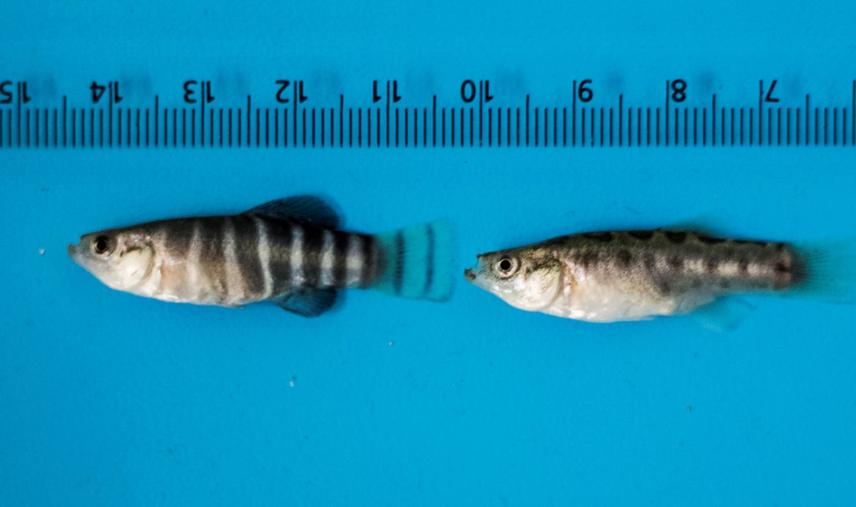Baran Yoğurtçuoğlu
Other projects
16 Jul 2015
Re-İntroduction and Re-İnforcement of a Critically Endangered Killifish, Aphanius transgrediens: Challenge Against Extinction
The major aim of the project is to reveal biological properties and requirements of an endemic, endangered freshwater fish species, Aphanius transgrediens, in an invaded habitat. In accordance with these data, a captive breeding program will be carried out for conservation of this species.

Male (Left) and Female (Right) A. transgrediens.
Aphanius transgrediens is a killifish which should most urgently be protected among other killifishes in Turkey because of being in danger of extinction. The spring system of Lake Acıgöl is the only natural habitat of A. transgrediens and the lake possesses Turkey’s largest sodium sulphate reserves extensively used in the industry. In addition to industrial activities, a dense Gambusia population, which should be regarded as a serious threat to the population of A. transgrediens in this area due to its invasive characteristics and direct predation on fry, was recorded.
To this respect, conservation actions will have vital importance for persistence of A. transgrediens. A captive breeding program and conservation actions in Lake Acıgöl and/or in tanks will be carried out for Aphanius transgrediens. Breeding fish in captivity is a widely used management practice that aims to restore wild populations of endangered species suffered from such introductions or habitat degradations. It may fail in certain cases due to having less genetic variation in captive fish than in wild populations. However this practice may be the only hope for a species in some instances.
Thus, the key contribution of our work will be to ensure a viable stock of A. transgrediens in order to be reintroduced or restocked into either their native habitat or suitable, alternative habitats. Comprehending the biology of A. transgrediens, minimizing adverse effects of Gambusia, ensuring stocks for further reintroductions and raising public awareness about habitat loss and species extinction will be the main objectives of the project.